Latest News
Innovation Makes Our Communities Safer
Posted by on September 15, 2014 at 5:35 PM EDT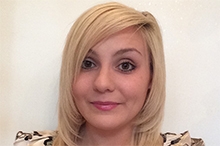
Brittany Valdez is being honored as a Individual and Community Preparedness Champion of Change.
As a Graduate Assistant at the West Virginia University Center for Excellence in Disabilities, I work with the state’s Assistive Technology program, West Virginia Assistive Technology System (WVATS), and Partnerships in Assistive TecHnologieS (PATHS). These projects are dedicated to increasing awareness about and access to assistive technology devices and services. Assistive technology is any device that can be used to perform tasks that would otherwise be difficult or impossible to perform.
The TapToTalk app was first brought to my attention while working on a project to educate public transit drivers in the state about how to assist riders who have issues with communication. To help facilitate communication between drivers and riders, I created a communication system consisting of cards with pictures that depicted common issues that arise while using the public bus system. To increase access to this system, I created an electronic format using TapToTalk, an assistive technology app for smartphones and tablets that allows users to create customized and portable augmentative communication programs by uploading photos and recording audio into specialized “albums.”
Upon completion of the communication system for public transit drivers, members of the PATHS board realized that TapToTalk could be beneficial to other service providers, especially first responders. In partnership with the Kanawha Putnam Emergency Planning Committee, PATHS initiated a project to apply the TapToTalk app to help first responders in emergency situations.
To begin, PATHS contacted representatives from the police department, fire department, and emergency medical services to determine what information is the most vital to obtain in emergency situations. We then created questions that could be answered with a simple “yes” or “no” to make the communication system accessible to those with communication issues. Next, we selected and created images to depict each question.
We created separate albums for each service provider within the app so that each album would reflect the needs of the various types of emergency responders. In addition to these specialized albums, we created a generic “Basic Info” album that can be utilized by all service providers.
After the initial completion of the app, first responders in the state were asked to identify additional languages that they felt would be useful. Based on their recommendations, each album was replicated in French, German, Japanese, Italian, and Spanish. These additional languages can be used by individuals with limited English proficiency when appropriate interpreters are unavailable.
I’ve learned the value of being innovative in preparing our communities for emergencies. We took the TapToTalk app and applied it to emergency situations, and that innovation is making our communities safer. I’m proud to have received the Champions of Change award and look forward to continuing to develop assistive technologies that help individuals communicate with first responders in crisis situations.
Brittany Valdez is a Graduate Assistant at West Virginia University. She works with the West Virginia Assistive Technology System (WVATS) and their nonprofit partner organization, Partnerships in Assistive TecHnologieS (PATHS).
Learn more aboutViewing Preparedness through a Small Lens
Posted by on September 15, 2014 at 5:32 PM EDT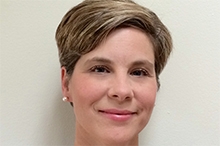
Susan Riedy is being honored as an Individual and Community Preparedness Champion of Change.
A quick web search on personal preparedness bodes over 18,000,000 results. Information is readily available to Americans who want to get prepared for any emergency. Yet, three years ago, when surveyed, only 17% of Albany County residents said they were prepared. So why aren’t more of us prepared?
Navigating through all of that information can be daunting. Finding out what is most relevant to each of us is challenging. Also, many just don’t believe a large-scale emergency will ever happen to them, but I’ve always believed that it’s better to be safe than sorry. With this in mind, Albany County Citizen’s Corp (ACCC) embarked upon a multidimensional approach to increasing individual and community preparedness. Recognizing the importance of input from the various communities that make up Albany County, ACCC reached out to service providers and communal leaders for help in developing strategies to improve preparedness. With the assistance of these dedicated individuals, ACCC increased preparedness among vulnerable populations and ensured meaningful and culturally appropriate information not only existed but was also readily available. I found that, while looking at the big picture is almost always valuable, viewing things from a smaller lens allows us to focus on the individual and unique needs of the many populations that make up our community.
I believe that successful preparedness rests on drawing upon the expertise of partners who know their communities better than we do. This was seen in the work we did with the Burmese community. A team from Albany County Department of Health and Sheriff’s Office created a preparedness presentation incorporating images and concepts that were identifiable to the Burmese population. University of Albany School of Public Health staff reviewed the presentation to ensure cultural sensitivity and to coordinate its English-Karen translation. The American Red Cross added resiliency materials. And at last, the presentation was well-received. Working together, we provided a specialized training to a vulnerable population while strengthening relationships not only with Burmese community but also with our partner organizations.
ACCC also strives to develop innovative and fun programs that call attention to National Preparedness Month (NPM). In 2013, ACCC collaborated with ShopRite to host a NPM cook-off between Albany County Executive Daniel P. McCoy and Albany County Sheriff Craig D. Apple, Sr. These celebrity chefs were each challenged to create a main dish and dessert using only non-perishable items found in their go-kits. Shoppers received family preparedness educational resources and completed a preparedness quiz for a chance to win a go-kit. Partnering with community leaders and a major grocery chain caught the attention of local media, which helped us further promote our message of preparedness to residents.
The task of preparing our communities often seems monumental. But our small lens approach has yielded a 10% increase in preparedness among our residents in the last 3 years. We hope our initiatives help foster creativity and confidence in emergency preparedness partners across the country, and help prepare our country for emergencies one person at a time.
Susan Riedy is the Senior Public Health Planner at the Albany County Department of Health. She directs the planning, implementation, and evaluation of activities associated with the Albany County Citizen Corps.
Learn more aboutChanging How People See Emergency Preparedness, With Small Steps
Posted by on September 15, 2014 at 5:25 PM EDT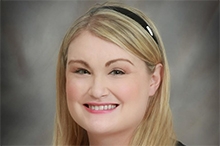
Erika Mahoney is being honored as a Individual and Community Preparedness Champion of Change.
It is an honor for me to be chosen as a White House Champion of Change, particularly since I am representing Do 1 Thing, the non-profit program that I spent my life working on. I am so proud of the work we are doing and will continue to do in the future.
I feel very strongly that as a nation we need to build resiliency, one small step at a time. In particular, we must ensure that those who live in high-risk areas, such as flood plains, or those with greater vulnerability, such as people with disabilities, are prepared ahead of time for emergencies and disasters. If we want to see the United States have a strong culture of emergency preparedness, then we need to work one community, one family, one person at a time.
Through AmeriCorps VISTA, I worked at Do 1 Thing right out of college. I was drawn to Do 1 Thing because it is built on the belief that everyone should have access to emergency preparedness information that is clear, concise, and free. People with disabilities and the elderly are among some of the very first groups I started working with, and I quickly realized that there is tremendous work to be done, particularly in those communities. I sought to create reading materials accessible to people with disabilities and the elderly. Large print, visual factsheets, braille, multiple languages, and audio are just some of the ways we have made our program accessible, but I knew that I had to stay longer to accomplish the things I wanted to accomplish. I offered to stay a second year, and during that year I was hired by the Michigan Region 1 Homeland Security Board to continue my work with Do 1 Thing.
Do 1 Thing has been an amazing and rewarding experience, and helping people prepare for emergencies and disasters has become my passion. Even as a child, I helped prepare my own family for emergencies, always asking my parents to make plans in case disaster strikes. We had sheltering plans, fire plans, emergency contacts, and meeting places. I began volunteering outside the home early on, as well. At the age of 12, I won the Youth Assistance Award for my volunteer work in my hometown of Rochester, Michigan. And at Michigan State University, I served in my dorm as the Community Service Director.
As Americans, it is important to remember to give back to the communities in which we work and live. I am proud of Do 1 Thing and of my work with the organization. While my career has been nontraditional, it has been incredibly rewarding. The Do 1 Thing program has grown from a small local organization into a national non-profit with community partners all across the country. I am so proud to be recognized as a Champion of Change, but I am even prouder that it is through the work of this fantastic program, Do 1 Thing.
Erika Mahoney is the Executive Director of Do 1 Thing, a non-profit dedicated to helping individuals, families, businesses, and communities prepare for all hazards and become disaster resilient.
Learn more aboutWatersheds and Wildfires
Posted by on September 15, 2014 at 5:20 PM EDT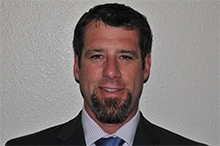
Jonathan Bruno is being honored as a Individual and Community Preparedness Champion of Change.
I grew up in a home overlooking the North Branch of the Winooski River in central Vermont. Each spring, as the winter snow melted and the temperatures climbed, my brother and I would wait anxiously for our father to announce that it was time to “move some rocks,” which to me meant swimming. As we’d splash in the clear waters, my father would spend hours clearing the boulders that had filled his swimming hole during the spring floods. As a kid, “moving rocks” was part of summer. As I grew older, I came to see dad’s underwater rock wrestling matches as a reminder that the river I loved as a boy is part of the global system that we interact with every day.
For more than a decade, I have worked in natural resource protection through the Coalition for the Upper South Platte (CUSP). With 27 staff and 6,500 annual volunteers, we work to balance the diverse needs and interests of Coloradans, serving more than 75% of our state’s residents by protecting our 2,600-square-mile watershed located in Colorado’s central Front Range. With mounting research demonstrating the global impacts of local wildfires, watershed protection demands a multimodal action approach, including fire prevention. Proper land management saves lives, money, and resources.
Two recent fires alone – Waldo Canyon in 2012 and Black Forest in 2013 – resulted in over $750 million dollars in insurance claims and greatly harmed the surrounding natural environment. These and other devastating Colorado wildfires spurred the creation of the Wildfire Insurance and Forest Health Task Force, which was designed to make recommendations aimed at lessening the impacts from fire, especially in wildland-urban interfaces (WUI), the zones of transition between unoccupied land and human development. The recommendations included an assessment of where to build and how to build so that our communities won’t be put in harm’s way. We must ensure that homeowners understand that living and building in the WUI, or deep in the forest, means that their homes could become tinderboxes when fire encroaches. While I still believe that the burden for action and property protection ultimately falls on the homeowner, the responsibility to take action falls upon everyone, and we must all be willing to take accountability and ownership over our communities.
Everyone is impacted by the way our natural resources are used, as well as how they are protected. From the river I swam in as a young boy in Vermont to the watershed I now work to enhance, protection of these resources starts with the local community. That includes property owners, local officials, land managers, and people like me who want to ensure safe and healthy communities. Wildfire issues, as well as many other environmental and societal challenges, are far too large to be solved by a single individual, office, or agency. We must be willing to accept that global problems are problems for all of us, and that solutions are possible when – and only when – we address these issues together.
Jonathan Bruno is the Chief Operating Officer for the Coalition for the Upper South Platte, a non-profit whose mission is to protect the water quality and ecologic health of the Upper South Platte Watershed.
Learn more aboutPassion for Public Safety
Posted by on September 15, 2014 at 5:18 PM EDT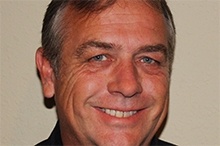
Phil Amtower is being honored as a Individual and Community Preparedness Champion of Change.
I have been involved in public safety for over 20 years. For the past 16 years, I have worked in the field of emergency management. I started out as a volunteer firefighter, and my passion for public safety grew from there.
In 1997, I was appointed by the county commission as Emergency Management Director. This was basically a volunteer position; I received $100 a month of pay and had a budget of merely $5,000 per year. I continued my emergency management work in this capacity until 2003, when I convinced the county commission that this position needed to be a full-time job. After 3 months as a full-time employee, we had our first major emergency. An F-3 tornado made its way through the western part of our county and left a wide path of destruction.
The next day, I was incredibly overwhelmed. There was a whole lot of work to do, and I was only one person! I decided that we needed more members of our community involved in emergency preparedness and management, so I decided to start a Community Emergency Response Team (CERT). I took the train-the-trainer course and taught my first class to our first group of volunteers in October 2003.
Since then, we have taught 53 classes and trained over 1,000 people in our county alone. The main goal of CERT is to train people to be better prepared for disasters and to empower them to help themselves and others in the wake of a disaster. After completing the course, the students can sign up as CERT volunteers. Right now, we have over 200 CERT volunteers in our county, and they provide over 4,000 service hours annually. This incredible team has been instrumental in preparing our communities for disasters before they strike.
Later, it became clear to me that we needed to work with other CERT volunteers across the state to address crises when they occur. In May 2011, an F-5 tornado hit southwest Missouri and devastated the city of Joplin. While thousands of CERT volunteers across Missouri responded, each CERT group responded in a different way. That uncoordinated approach hurt our emergency response efforts. After that, I decided that we needed a unified approach that would alleviate some of the duplication that happened in Joplin and harness all the resources from southwest Missouri’s CERT groups. When all of the groups next met, I pitched the idea, and MO CERT 1 was born. So far, the MO CERT 1 team has been deployed all across the Midwest, from Moore, Oklahoma, to Baxter Springs, Kansas, to Branson, Missouri. The team can provide shelter support, perform wilderness search and rescue, remove debris, and conduct damage assessments and wellness checks.
My experiences have shown me that we can only respond effectively to emergencies if we come together and rely on each other. It’s been incredibly meaningful to help make that happen in my home state of Missouri.
Phil Amtower is the Director of Emergency Management for Christian County, Missouri and the Task Force Leader for MO CERT 1.
Learn more aboutChanging the Culture through Education and Understanding
Posted by on September 15, 2014 at 5:12 PM EDT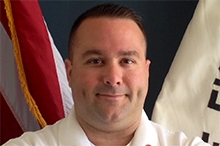
Lt. Brian K. Rand is being honored as a Individual and Community Preparedness Champion of Change.
As an emergency responder, I’ve been taught that all events have a “life cycle.” They consist of a beginning, a middle, and an end. But emergency management and community preparedness do not have a life cycle. They have a beginning, but the task of managing emergencies and preparing our communities is unending.
That’s what I find so exciting about emergency preparedness. Preparedness means getting ready for an event before it happens, even if such an event has never occurred in a given community. I am happy to say that this approach is now guiding emergency services preparedness and training across the country.
Preparing emergency action plans for an event that may or may not occur can be a daunting task; it always requires a great amount of time, effort, research, and training. I have found that it is important to remember two things throughout this difficult process. First, always ask “what if.” And second, never place yourself in the position of having to answer the question of “what do we do now.” Changing the culture of emergency response to be proactive is a major goal we should all strive to achieve.
My work at the Watertown Fire Department has given me a chance to enact my vision of proactive community preparedness. As an example, we have worked with stakeholders to enact policies to deal with opioid overdoses and the pre-hospital treatment of these events. The Department went to great lengths to meet with community activists, hospital officials, and medical directors, as well as to enhance our pre-hospital treatment of overdoses on scene during the event.
Because we saw great success with this program, we are now working with local partners to help change the legislation to have the same medication we provide also available on scene (Naloxone). By educating and changing the culture of how communities perceive an individual who becomes addicted, we gain greater support for important programs that help treat individuals with addictions. The Department offers training to families to help better understand addiction and to save the life of a family member in an emergency. At a minimum, we hope that our education and training will allow an individual who cares for a person afflicted with addiction to have the proper tools to save his or her life.
A piece of advice that I received as a U.S. Marine from my Gunnery Sergeant, Kenneth Crutcher, still guides my thinking today: “If you find yourself with nothing more to do, you are wrong.” This is the mindset you must maintain while creating and implementing emergency preparedness plans of all shapes and sizes. You are never done. You can always go back and make things better.
This is the attitude that ensures emergency preparedness workers build relationships with community members who are needed to create community-centered solutions to emergencies. Engaging these local partner is vital because they will be the ones there in the event of an emergency. Preparing all aspects of a community is the key to success in an ever-changing emergency management landscape here in the United States.
Lt. Brian K. Rand serves as the Emergency Medical Services Coordinator and Training Officer for the Watertown, Massachusetts Fire Department.
Learn more aboutPutting Others before Yourself
Posted by on September 15, 2014 at 5:02 PM EDT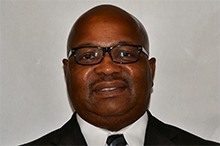
Marny D. McLee, Sr. is being honored as a Individual and Community Preparedness Champion of Change.
I have always had a strong commitment to my family, community, and country. I grew up in a single-parent household and was the oldest of six boys, so I had to step up and help take care of my family. This showed me that I could dedicate myself to improving the lives of those around me—members of my family, community, and country. When I was old enough, I joined the military and served on Active Duty in the U.S. Air Force for over 20 years. The values I learned from my experiences with my family and in the military are now a part of me, and those values have driven me towards working in community preparedness.
My journey to Citizen Corps started over 10 years ago, when I began a second career as an Emergency Planner. In this role, I presented to community groups, faith-based groups, and schools about Citizen Corps and the importance of emergency preparedness. Engaging with these communities showed me that my true calling was in family safety and community preparedness.
Early on, it was clear to me that partnerships and outreach had to be two pillars of our community preparedness work in Delaware. To bring together local stakeholders and ensure community investment, we made it mandatory for programs to be sponsored by a county or local emergency manager, fire chief, or chief of police. We also discovered that the business community, educational institutions, and non-profits could be helpful in providing citizens with opportunities to get involved in community preparedness. We now have partnerships with organizations all across the state, such as the Boy Scouts of America and the YMCA. We also have strong relationships with faith-based communities, such as the Muslim community.
I’ve learned that partnerships allow us to do much more than we could ever do alone. For example, we sponsor an annual Family Emergency Preparedness Day, and it is absolutely essential that we have help from our partners. Working with Minor League Baseball has allowed us to spread our preparedness message all season long. We have also built a partnership with the amateur radio community, which helps us effectively improve emergency communications during times of disaster.
I have also helped establish local groups of emergency preparedness volunteers so that communities all across the state are prepared for emergencies. I have pushed the State Citizen Corps Council to establish local citizen corps councils and provide them with support as they engage their own communities. By empowering local communities, we have been able to create solutions tailored to the unique needs of diverse communities.
Providing people with the chance to serve through volunteer opportunities is important to bringing together communities. Through educating and training volunteers, we reach even more people in need of community preparedness. And by providing opportunities for volunteers to contribute, we ensure that communities are actively involved and empowered in the process of preparing for emergencies.
Our strategy of partnerships and outreach has helped us reach more people than I ever could have imagined. I am incredibly proud of the work we have done to prepare the citizens of Delaware for disasters.
Marny D. McLee, Sr. is the Delaware Citizen Corps and Community Emergency Response Team (CERT) Training and Outreach Coordinator. He works at the Delaware Emergency Management Agency (DEMA).
Learn more aboutVeteran Entrepreneurs Honored as White House Champions of Change
Posted by on September 4, 2014 at 2:36 PM EDTEd. note: This is cross-posted on the Small Business Administration's blog. See the original post here.
The energy in the room was inspiring as 11 veteran and veteran spouse entrepreneurs took the stage to be honored as Champions of Change on August 27. Invited to the White House to be honored for their extraordinary achievements, these “Champions” are community leaders who empower veterans and give back to the veteran community.
Throughout the event, there was one constant theme: Veterans are natural leaders. Military training provides veterans with a skillset that translates directly to entrepreneurship. “People might learn leadership in various ways, but there’s no place like the military,” said Champion Louisa Long Jaffe, who attributes the problem-solving skills taught in the military as one of many reasons veterans not only make successful entrepreneurs but also great employees.
The Champions also spoke of their passion to serve; a passion that has evolved from serving their country in uniform, to serving their communities by creating jobs, providing solutions, and contributing to economic growth.
Learn more about
- &lsaquo previous
- …
- 22
- 23
- 24
- 25
- 26
- 27
- 28
- 29
- 30
- …
- next &rsaquo


Twitter